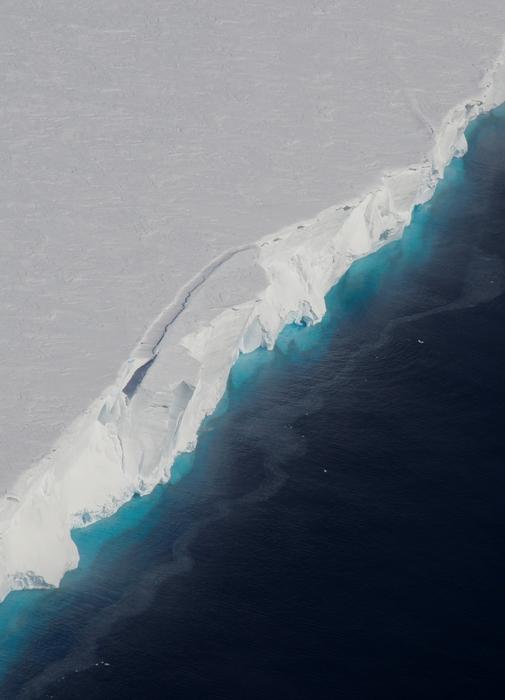In the unforgiving landscapes of Antarctica’s Amundsen Sea Embayment, the interplay of climate and geography creates a complex system that continues to puzzle researchers worldwide. Among the focal points of this research is the Thwaites Glacier, often referred to as the “Doomsday Glacier.” This glacier symbolically represents the precarious state of climate change and its potential impacts on global sea levels. New findings surrounding low-level jets (LLJs), powerful wind phenomena unique to this region, suggest that they might play a devastating role in accelerating glacial melt. These jets occur when cold, dense air from the interior of Antarctica descends toward the coast, sometimes intensified by nearby weather systems.
A recent study conducted by a collaborative effort of scientists from the Indian Institute of Technology and the British Antarctic Survey has shed light on the mechanics underlying these LLJs. Published in the journal Advances in Atmospheric Sciences, the research provides crucial insights into the frequency and causes of these winds, asserting their influence over the Thwaites and Pine Island glaciers—two key players in the narrative of ice melt and associated sea-level rise. The ongoing melting of these glaciers is alarming, as they contribute significantly to the increasing global sea levels we are witnessing today.
Understanding LLJs begins with acknowledging the setting in which they form. Researchers discovered that these jets frequently manifest along the coast of the Amundsen Sea, affecting both the air and sea surfaces. The impetus for the study arose from earlier research that identified LLJs as common occurrences in the region influenced by winds descending from high, icy areas, also called katabatic winds. However, the new findings suggest that the presence of cyclonic systems could amplify these phenomena, complicating the climate model efforts to predict future melting.
To enhance their understanding of this atmospheric pattern, the research team employed a methodical approach, utilizing radiosonde measurements. These instruments, launched from ships stationed near the Amundsen Sea coast, provided critical data about wind speeds and temperature. The team combined this observational data with high-resolution weather models to visualize and simulate the jet formations. The outcome was revealing: nearly half of the radiosonde launches detected LLJs, with a significant number blowing offshore, suggesting a broader impact on local climatic conditions.
The implications of these jets are far-reaching. Enhanced wind patterns could impact the redistribution of snow over glaciers, influencing their structural integrity and melt rates. Additionally, stronger winds might disrupt ocean currents and modify sea ice dynamics in the region. The complexity of these interactions indicates a multifaceted relationship between climate variables and glacial stability, whereas earlier models may have oversimplified the factors involved.
Dr. Sai Prabala Swetha CHITTELLA, the study’s lead author, emphasized the importance of understanding these LLJs, indicating that their significant presence and intensity could lead to unforeseen consequences for the Thwaites and Pine Island glaciers. These insights into LLJs could be pivotal for modeling future scenarios of ice melt and sea-level rise, urging scientists and policymakers alike to consider the cascading effects of wind patterns in their strategies for addressing climate change.
Furthermore, co-author Dr. Andrew Orr highlighted the unexpected frequency of these jets and their amplification by passing storms. This revelation calls for a reevaluation of the region’s climatic models, as accounting for LLJs may dramatically alter projections of glacial melting timelines and patterns. Indeed, the evidence presented suggests that cyclonic activity plays a critical role in producing these atmospheric jets, representing a previously underexplored mechanism in Antarctic meteorology.
As we look forward to continued research in this volatile region, the team plans to extend their investigations, particularly during winter months when LLJs are expected to be more pronounced. The variations in atmospheric conditions during this time may reveal critical trends that could enhance our collective understanding of glacial dynamics in a rapidly changing climate. Dr. Pranab Deb, also associated with the study, expressed a keen interest in studying the influence of these extreme winds on ocean circulation and sea ice movement, recognizing the mutual interactions within this polar environment.
This ongoing research is vital, given the alarming pace at which glaciers like Thwaites are disintegrating. Understanding the mechanics of LLJs is not only an academic pursuit; it directly impacts how scientists predict ice melt and its subsequent global ramifications. The accelerating loss of ice in Western Antarctica signals urgent need for refined climate models that can incorporate the complexities unveiled by this study.
The scientific community stands at a crossroads, increasingly aware that each discovery could reshape our conception of climate models and disaster preparedness. By enhancing our understanding of low-level jets and their implications for glacial dynamics, researchers are forging essential pathways toward effective policy making and global responsiveness to climate change.
The urgency of the situation cannot be overstated: the melting of the Thwaites Glacier has become a global concern, representing more than just local environmental changes. It embodies the challenges of interconnected ecological systems and the necessity for a collaborative scientific approach to confront climate crisis effects. As nations grapple with rising sea levels and their potential threats, studies like this offer hope and direction for informed policy and community resilience in the face of climate change.
Subject of Research: Low-Level Jets in the Amundsen Sea Embayment, West Antarctica
Article Title: Radiosonde Measurements and Polar WRF Simulations of Low-Level Wind Jets in the Amundsen Sea Embayment, West Antarctica
News Publication Date: 28-May-2025
Web References: https://doi.org/10.1007/s00376-025-4398-5
References: DOI: 10.1007/s00376-025-4398-5
Image Credits: Jeremy Harbeck
Keywords
Antarctic climate, low-level jets, Thwaites Glacier, sea-level rise, climate change, atmospheric science, ice melt, ocean circulation, weather systems, glacial dynamics.




